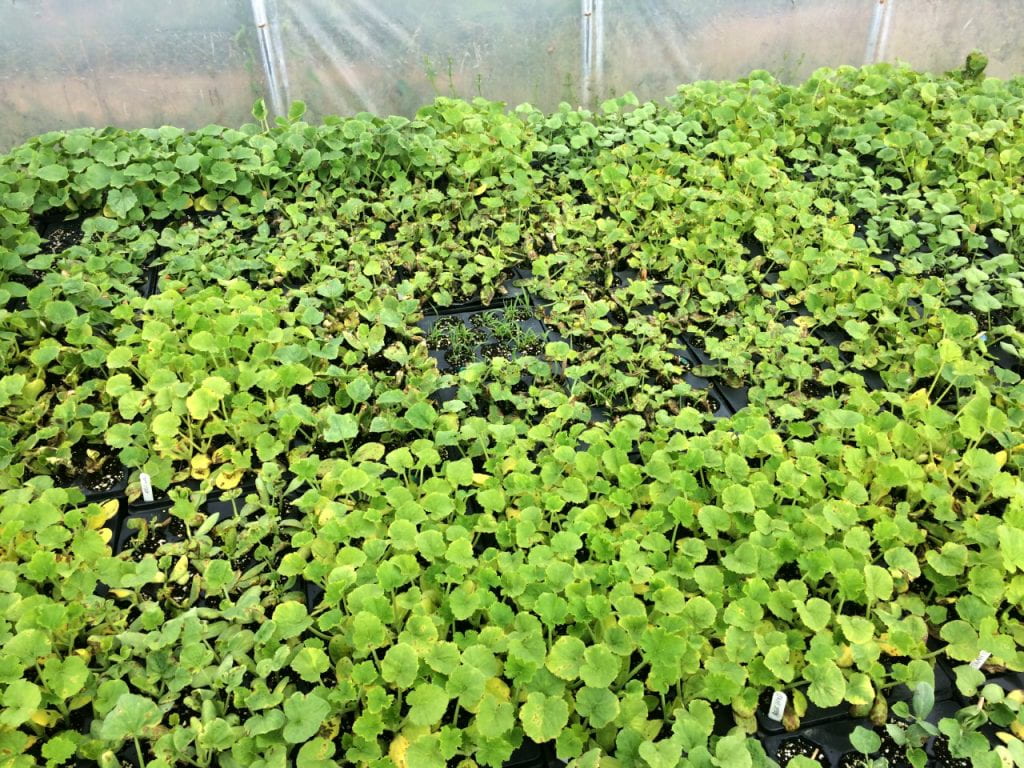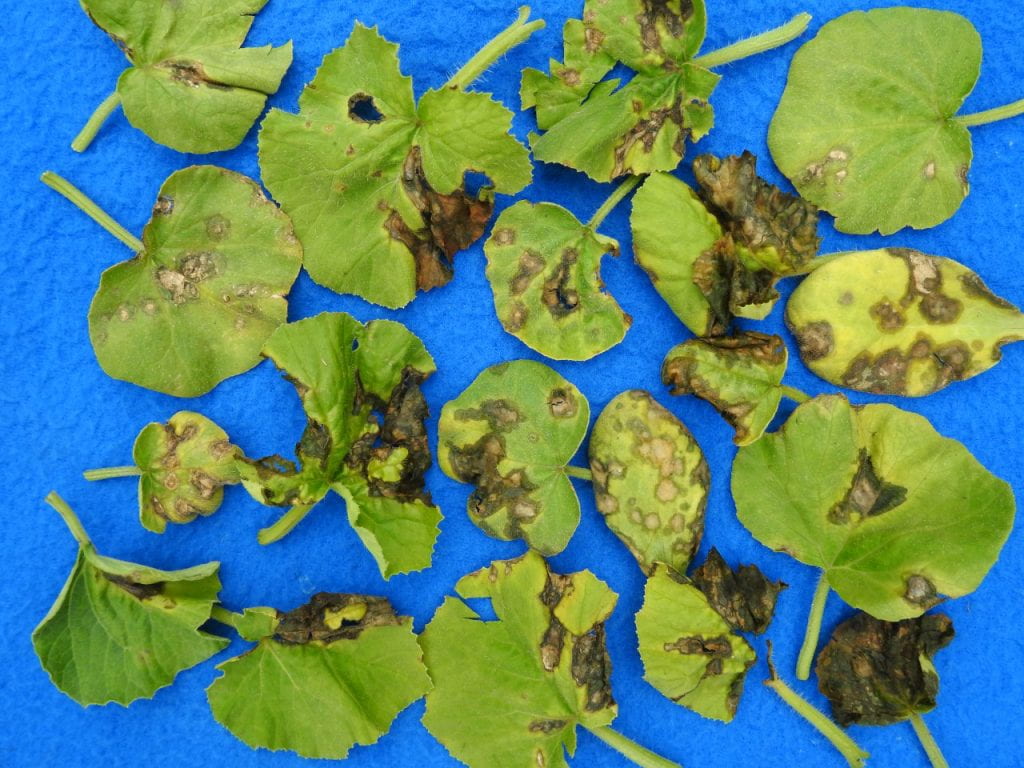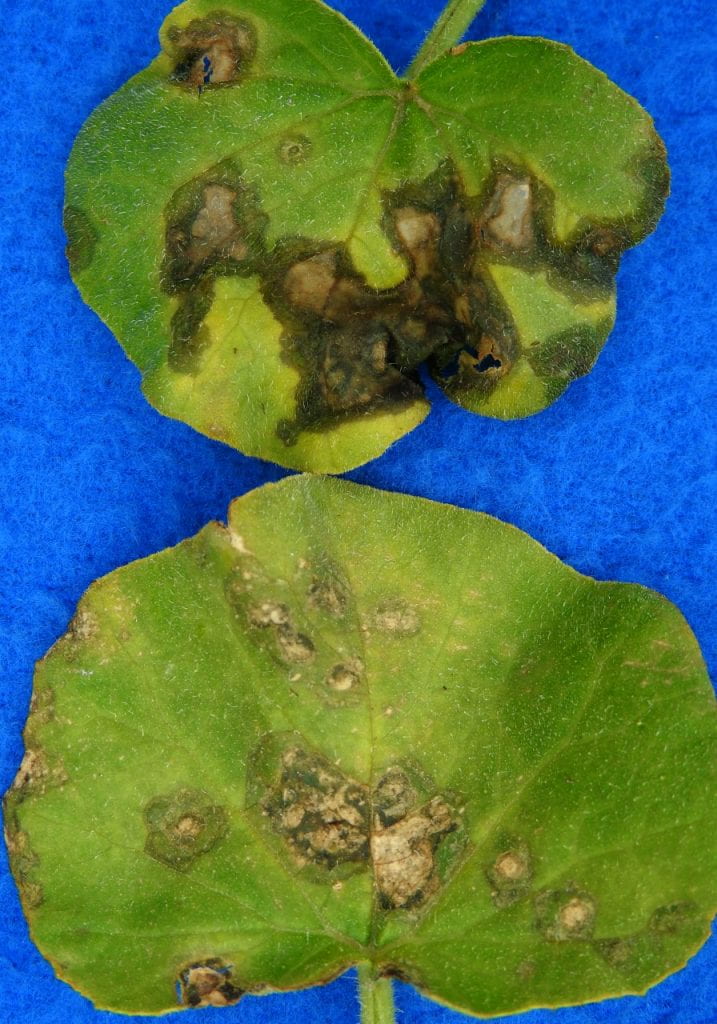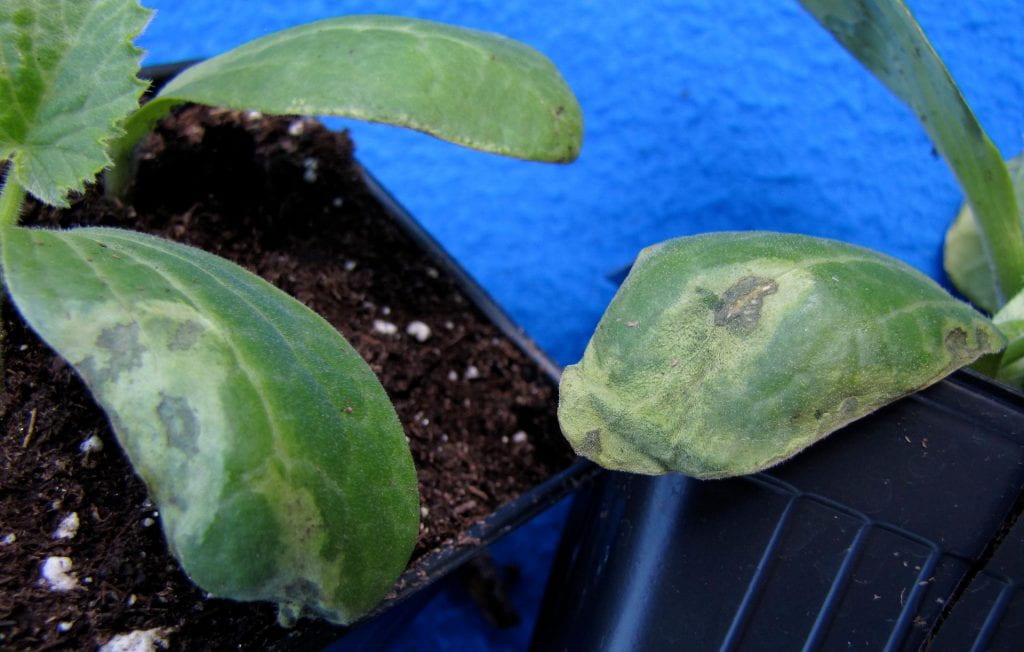All cucurbit crops are susceptible to this disease. It has been seen sporadically and uncommonly on Long Island, likely reflecting the pathogen, a bacterium, not being established and surviving in the area. Conditions not being highly favorable may also play a role. Warm humid conditions with frequent rain are favorable for development of angular leaf spot. Typical of bacterial pathogens, this one is dispersed primarily by splashing water. While rainfall can be common during spring on Long Island, summers are usually dry. The pathogen can be seed-borne.
Symptoms of angular leaf spot are similar to those of Xanthomonas leaf spot (formerly known as bacterial leaf spot) and include water-soaked, brown leaf spots often with yellow halo and angular shape delineated by veins. Leaves that become severely infected often turn yellow and develop tattered appearance as diseased tissue dries and drops out. Symptoms also develop on petioles, stems, and fruit. Bacterial exudate comes out of symptoms under humid conditions which then dries to form a thin, white crust. Symptoms on fruit provide an opening for soft rot bacteria to enter. Bacterial leaf spot, while also not common on Long Island, has been seen more often than angular leaf spot here and elsewhere.
Management: Purchase seed that has been tested for bacterial pathogens. Select resistant cucumber varieties. When growing transplants, provide separation when possible, such as alternating rows with trays of cucurbits with trays of other vegetables to minimize opportunity for spread. Keep humidity in greenhouse below 80%. Water in the morning when leaves are dry and conditions facilitate fast drying. This is important when growing transplants and also in the field where preferred drip irrigation is not feasible. Avoid planting multiple cucurbit crops together. Check plants routinely for symptoms. Rogueing individual affected plants when detected early is worthwhile, especially when found in trays. Do not work in fields when leaves are wet because equipment and workers brushing against leaves that are infected and then healthy can move bacteria. Copper combined with mancozeb has been the only fungicide option until recently. It is most effective when applications start before or at very first symptoms. There is concern of bacteria developing resistance to copper. Actigard is labeled for angular leaf spot as well as bacterial leaf spot; plant activators need to be applied before infection to be effective. Labeled biopesticides include Cease and Serenade AOS. Other biopesticides labeled generally for managing bacterial diseases include BacStop, KeyPlex 350, Procidic, and Timorex Gold. Both bacterial pathogens can survive in crop debris, therefore it is important to promptly incorporate crop debris after harvest and to rotate fields where cucurbit crops are grown with at least 2 years between cucurbit crops.
The following images taken in June 2019 are from an occurrence that likely started in one variety that also was associated with angular leaf spot outbreaks at two farms in New England. At the Long Island farm there were many trays with about 50 varieties of pumpkin, gourd and squash seedlings being grown outdoors to avoid plant elongation common with cucurbit seedlings grown in greenhouses where light level typically is lower than outdoors. Wetter conditions outdoors provided opportunity for the bacterial pathogen to develop and spread. Angular leaf spot had not been observed previously at this farm. The grower threw out the worst affected plants and was able to have a successful planting at least partly due to dry summer conditions with limited rainfall. First image is courtesy from the grower.
Please Note: Fungicides mentioned are for use in commercial production, not gardens. The specific directions on pesticide labels must be adhered to — they supersede these recommendations if there is a conflict. Any reference to commercial products, trade or brand names, is for information only; no endorsement is intended. For up-to-date information on labeled conventional fungicides see Cornell Integrated Crop and Pest Management Guidelines for Commercial Vegetable Production and biopesticides see the Biopesticides website.
The following photographs are of affected zucchini seedlings in 2012 and the bacterial pathogen that grew out of cultured leaf pieces.











